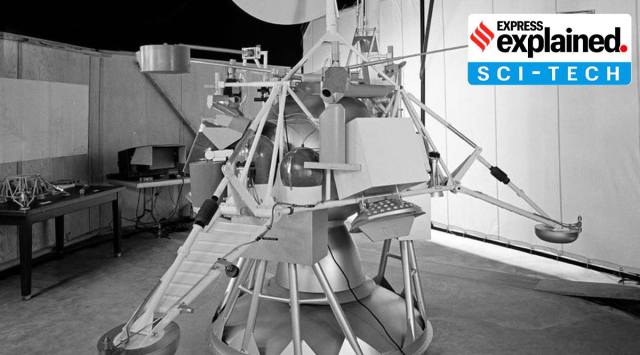- India
- International
Explained: How did a rocket booster from 1966 become a Near-Earth Object?
Astronomers track asteroids using telescope to determine if there are potentially hazardous asteroids that pose a threat to the planet. Therefore, it is also important for them to be able to distinguish between natural and artificial objects that orbit around the Sun.
 Scientists concluded that the object is in fact the rocket booster, after more than 170 measurements of the object's position were analysed over the course of three months by observatories across the world.
Scientists concluded that the object is in fact the rocket booster, after more than 170 measurements of the object's position were analysed over the course of three months by observatories across the world.NASA has confirmed that the Near-Earth Object called 2020 SO is the rocket booster that helped lift the space agency’s Surveyor spacecraft toward the Moon in 1966.
Scientists concluded that the object is in fact the rocket booster, after more than 170 measurements of the object’s position were analysed over the course of three months by observatories across the world.
So what was Surveyor-2?
The Surveyor-2 spacecraft was supposed to make a soft landing on the Moon’s surface in September 1966, during which time one of the three thrusters failed to ignite as a result of which the spacecraft started spinning and crashed on the surface.
The aim of the mission was to reconnoiter the lunar surface ahead of the Apollo missions that led to the first lunar landing in 1969.
While the spacecraft crashed into the Moon’s surface, the rocket booster disappeared into an unknown orbit around the Sun. 📣 Follow Express Explained on Telegram

How was the object determined to be the rocket booster?
Astronomers track asteroids using telescope to determine if there are potentially hazardous asteroids that pose a threat to the planet. Therefore, it is also important for them to be able to distinguish between natural and artificial objects that orbit around the Sun.
The rocket booster has come “somewhat close” to the Earth in the past few decades. One approach to the Earth in late 1966 was so close that the object was thought to have originated from Earth.
In September, the NASA-funded Pan-STARRS1 telescope detected an unknown object which followed a curved path in the sky, indicating its proximity to the Earth.
Initially, the object was thought to be an asteroid orbiting the Earth and was hence given a name by the Minor Planet Center.
Following this, scientists from the Center for Near-Earth Object Studies (CNEOS) observed that the orbit was not a normal asteroid’s, since asteroid orbits are more tilted and elongated relative to the Earth’s.
But as per NASA, 2020 SO’s orbit around the Sun was similar to that of the Earth’s, “was at about the same distance, nearly circular, and in orbital plane that almost exactly matched that of our planet- highly unusual for a natural asteroid.”
On November 8, the booster drifted into the Earth’s sphere of dominant gravitational force, in a region called the Hill Sphere. 2020 SO will remain in this region for over four months before it takes on a new orbit around the Sun in March 2021.
It made its closest approach to the Earth on December 1 allowing scientists to study its composition and know for sure that the object was in fact the rocket booster.
Astronomers will now continue to study it until it is gone.
EXPRESS OPINION
Apr 24: Latest News
- 01
- 02
- 03
- 04
- 05









































